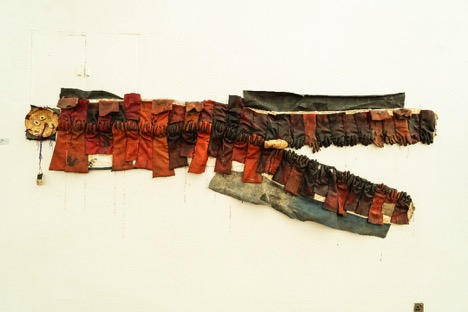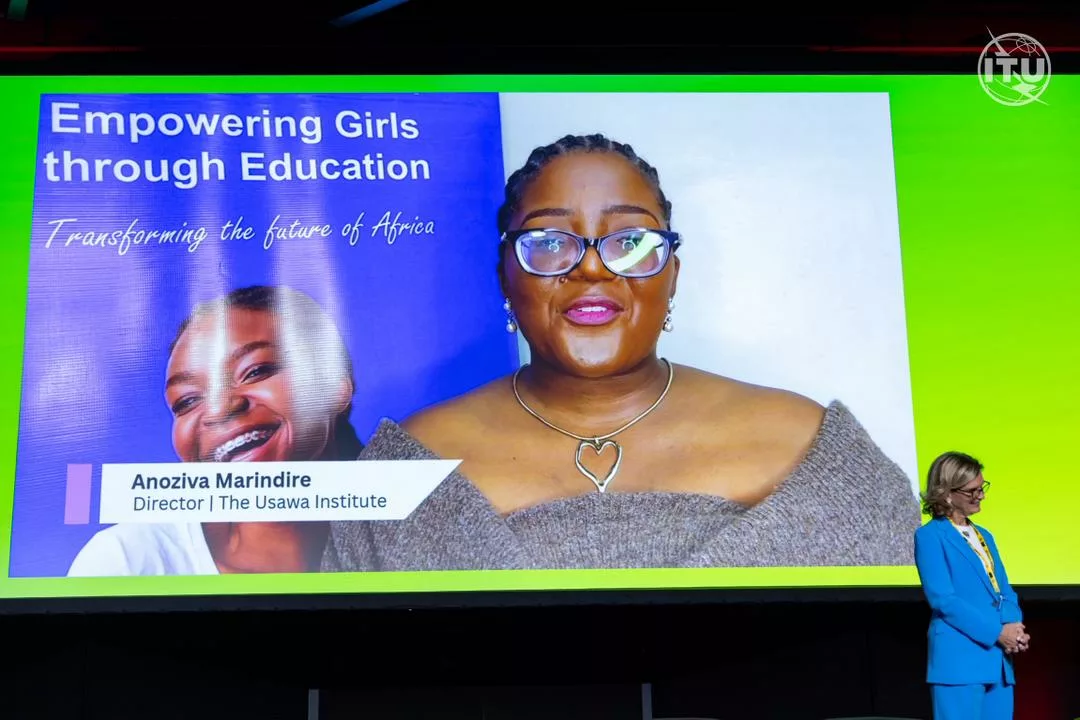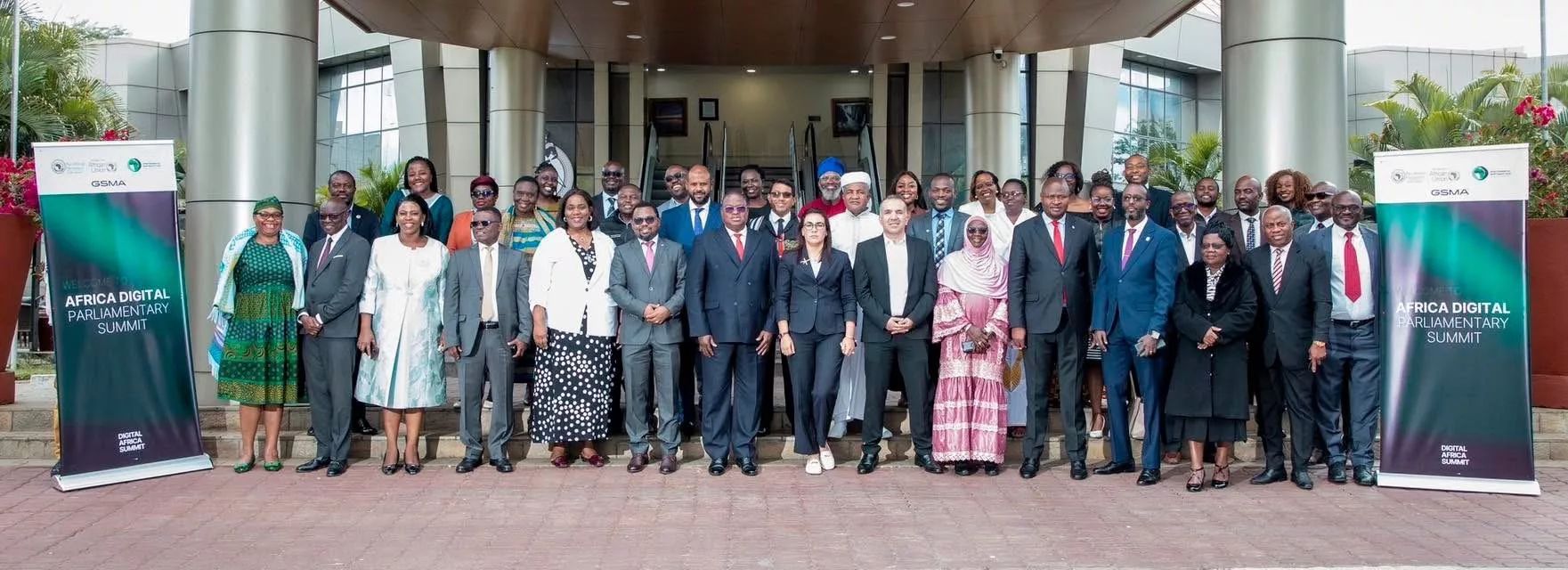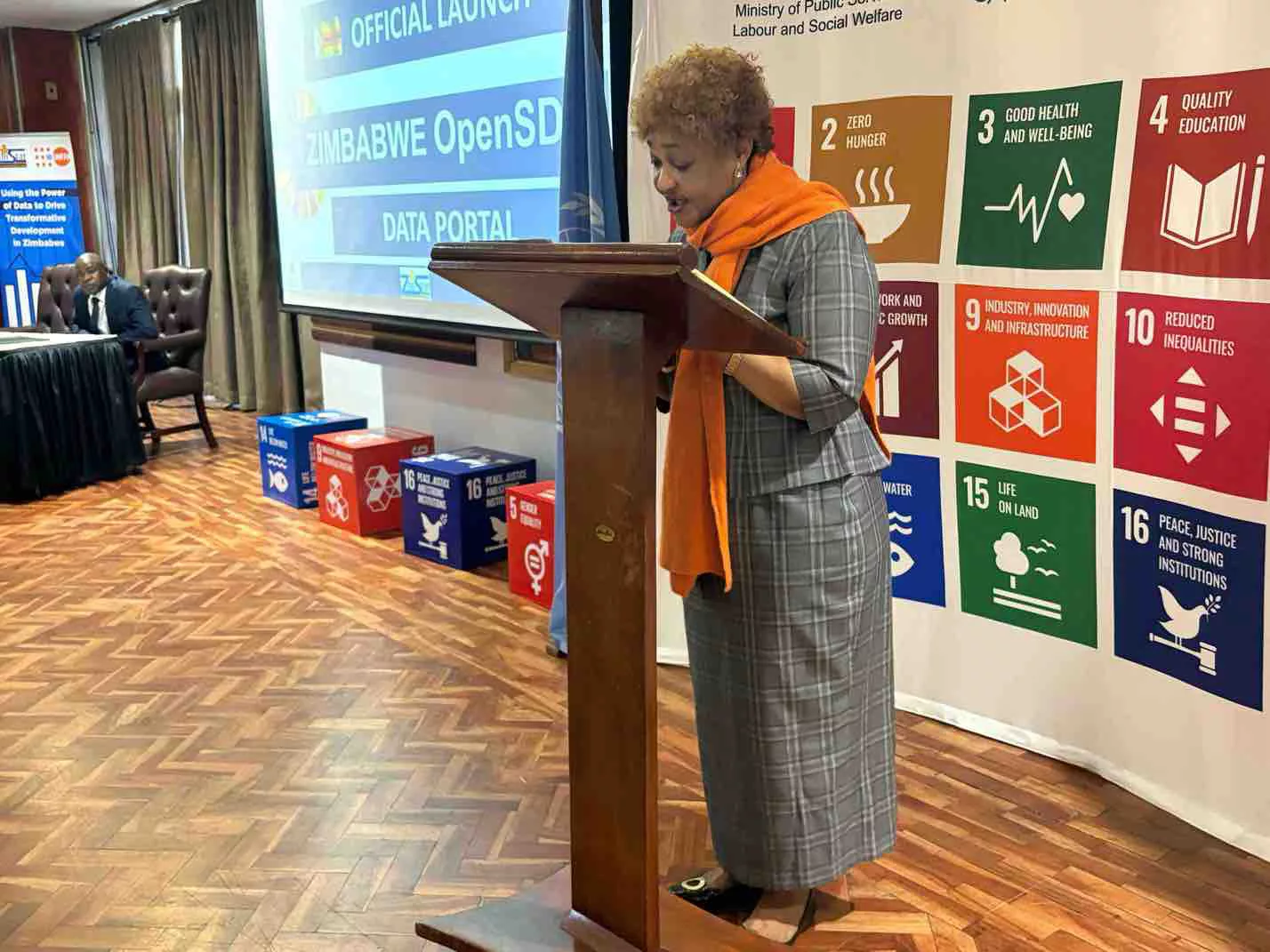|
Getting your Trinity Audio player ready...
|
Writes Tinashe Muchuri
Tawanda Takura’s A Gathering: Katundu Katurikwa solo exhibition at the National Gallery of Zimbabwe that premiered on the 5th of October passes the clean environment message to the future.
The title of the exhibition is a combination of two Shona words, which are katundu for luggage, baggage, or burden and katurikwa referring to something hanging on someone’s shoulder, heart, head, or mind. Katurikwa refers also to a small axe a person carries on one’s shoulder going into the bush to collect poles for use at the homestead and is also to use as protecting oneself from eventualities. Residents of the Chivi District of Masvingo province in Zimbabwe call the small axe kakaruka. Katurikwa is usually carried by men whenever they embark on a journey no matter how short the journey is.
Katundu katurikwa in this regard means that luggage is like a small axe that you carry into the bush to collect construction materials for the home or for self-protection from danger lurking in the forest. The Shona further state that, anyumwa chati kwatara, ndeane katurikwa and in this adage, it means the one who feels uneasy or acts suspiciously about something that has dropped is the one who has hung it.
In this adage, katurikwa means something that is hanged somewhere, it could be a crime, a secret hidden somewhere, or a bad habit one is struggling to do away with. This undesirable katurikwa is also referred to as something that is not good and the word is normally used to incriminate those who appear speciously or who appear to exhibit guilty conscience when a crime that they would have committed is mentioned.
Takura’s exhibition strikes a string of connections to most Zimbabwean day-to-day living experiences. It makes one think of the luggage or baggage that Takura hangs on the walls of the National Gallery of Zimbabwe in Harare talking about the journeys people’s lives travelled.
Katundu Katurikwa is a gathering of found objects picked from the illegal dumpsites dotted around the city of Harare and then knit together to tell various stories the society of Zimbabwe is grappling with, especially in dealing with the residues of one’s joyous utilisation of objects of safety.
Shoes and hand groves are observed as protective clothes needed in safeguarding their wearer from injury and contraction of diseases. Shoes can be metaphorically referred to as any protective materials worn as condoms sometimes euphemistically called shoes or shangu in Shona.
It is how they are discarded after their use that matters. In most cases after use, they get disposed of at illegal dumpsites and they become a burden to society. The discarded gloves and shoes pose a danger to the communities and to inform the society of solid waste management, Takura recreated a figure of a worker out of the gloves as a message to the society to introspect on how it discards its used safety materials.
Gabbage has become a type of baggage the country of Zimbabwe has been grappling with for a long time. As a result, Bulawayo City Council has introduced a fine for people found littering in the city to the tune of USD20 and Harare City Council is targeting to charge informal vendors who litter the streets in the CBD on their points of sale. The cities have been fighting illegal solid waste dumping not only in the CBD but around residential areas as well. Heaps and heaps of uncollected litter are in sight as the depleted city waste management department is battling to clear the country cities of solid waste. Residents of affluent suburbs have resorted to hiring private refuse collectors to alleviate the lack of service delivery by the city’s waste management department. Littering is a crime and Takura here is saying this is the crime that we are committing to Mother Earth.
The battle to return the Sunshine City status of the capital Harare has put the Government of Zimbabwe and the Harare City Council in a protracted war after the former hired Geogenix BV, a Dutch Waste Management Company to design, construct, operate, and maintain the transformation of Pomona Waste Management Company into an Energy Power Station using solid waste collected in the Harare residential areas, business areas and industrial areas.
This initiative as said are effort to clear Harare of the litter baggage that the residents are grappling with at this very moment. Apart from this initiative, the President of Zimbabwe introduced a monthly countrywide cleanup campaign on the first Friday of every month to develop a culture of cleanliness among the citizens. Cleanliness is said to be godliness, however, no matter how spiritually the nation of Zimbabwe is, it forgets about this principle as litter is discarded carelessly everywhere.
Takura therefore reminds his audiences that as they wish to be clean before God, they should also strive to be clean and live in a clean environment. On the other side of this spiritual baggage, a lot is said about how the church is perpetrating child marriages, sexual harassment, and financial mismanagement, and some operate at a cult level of administering violent discipline to their members. The spiritual institutions become a katundu that the country and the world are carrying which need to be freed from the society for a society to live positively in harmony.
For many years artists have been creating art from what they call found objects and the art has travelled to many cities across the world at exhibitions or after they have been bought by the art collectors. Recently Moffart Takadiwa had his solo show at the National Gallery of Zimbabwe where one of the art installations was the Walk of Shame made up of headless toothbrushes. Another artifact was titled Mushonga wezino which was made from empty toothpaste containers picked from the streets of Harare. This shows the magnitude of recklessness residents of Harare have towards a clean environment and the role artists are playing in conscientizing society into being responsible citizens.
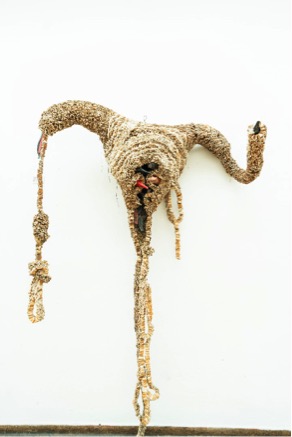
Using parts of computer discards, Takura created a decorated figure that resembles a female being. Computers are used to create, and transmit information from one end to the other. However, once they become dysfunctional, they are thrown all over the spaces at illegal dumpsites posing danger to the soil and the creatures of the earth. A female usually carries her own jewelry in her handbag and Takura here informs the citizens that ane chake anotakura, one who is endowed with possessions carries their own baggage and or tools for safety in the case of ensuing danger.
Uncollected litter poses a lot of danger to the communities among them the spread of cholera, typhoid, dysentery, and more. A clean environment is everyone’s responsibility and everyone has a role to play in the insurance of a cleaning environment. Takura’s message is that every citizen should take responsibility for a clean environment. A clean environment translates to a healthy environment and a happy society. If litter is not collected, it becomes a monster in the society a burden we carry and struggle to offload.
Takura’s exhibition is more than an art exhibition but a concept calling on people to be environmentally aware and friendly. He echoes the late national hero Oliver Mtukudzi’s song where he sings that kugara nhaka varume, kuona dzevamwe, ruzivo maturiranwa. A deceased’s estate is distributed from knowledge learned from neighbours. Takura is insinuating that knowledge and wisdom is luggage that need to be passed on to the next generations that litter is not as what everyone sees, but that there is value in litter, and if not collected it becomes baggage the communities carry on, on its shoulders bringing strife in return. It adds to the Shona adage that goes abareka vana ava nemapapiro (one who gave birth has grown wings). Children are their parent’s wings and shoulders upon which their parents’ knowledge flies to different parts of society. Everyone who interacts with the children will be made to remember something about their parents.
Takura’s obsession with leather tackling issues of cultural memory goes deeper into remembering our cultural ways of cleanliness, being responsible, accountability, and preparedness to defend self out of danger. Leather, wire, and rubber have been a thread in Takura’s art creation from the days he decided to venture into visual art. In this exhibition, Takaura has carried his cross in what the late Tuku would sing, pangu pose ndasakura ndazunza, zvasarira iwe kufuga nekuwarira (I have done my part diligently and it is now left for you carry on doing your part) and leaves the burden upon the citizens of this beloved world to play their part in as far as cleanliness in thought, deeds, and spirit is concerned. The choice is now up to the communities to live or die.


